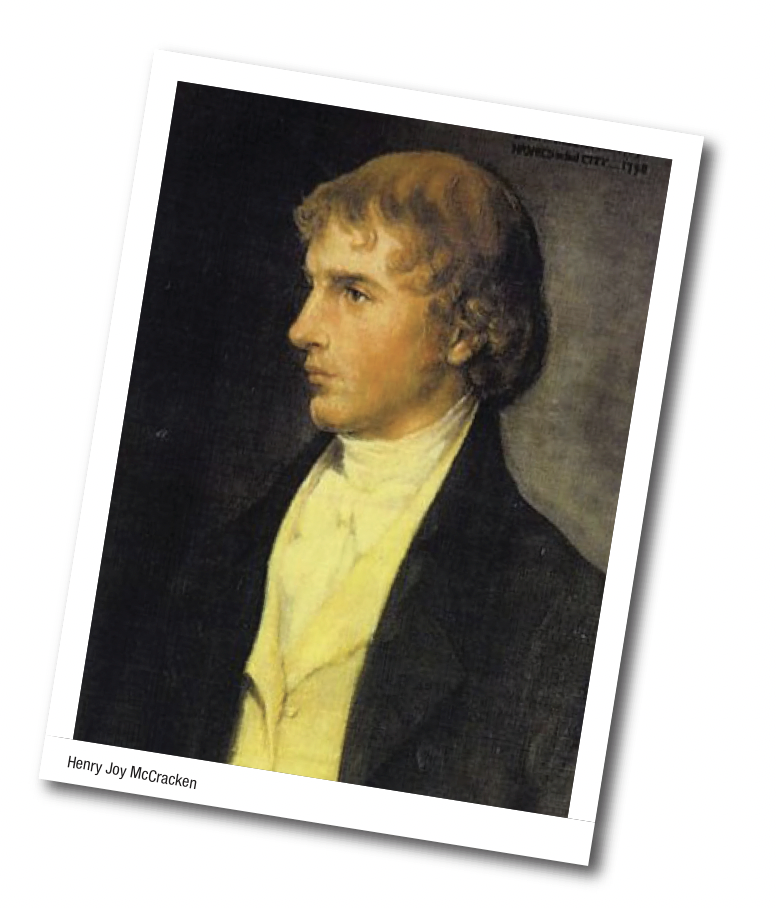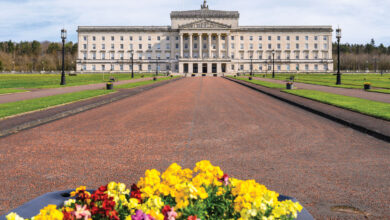Saving the Assembly Rooms

A Belfast building which was the scene of the courts-marshal – prior to their execution – of the United Irish leaders and later redesigned by Charles Lanyon must be secured and brought back in to public use, writes John Gray, Chair of Reclaim the Enlightenment and Convenor of the Assembly Rooms Alliance.
The Assembly Rooms located in Belfast’s Cathedral Quarter is the city’s most historic building. Originally built as a single storey market house in 1769, an additional storey was added in 1776 transforming it into the Assembly Rooms. As such, it lay at the very centre of the 18th century town.
It was also central to the cultural life of the town during its enlightenment era. It was here that Henry Joy McCracken ran a short lived Sunday school for destitute children, here too that in 1786 the proposal to set up a Belfast-based slave trading company was defeated. In 1792 it was the venue for the last assembly of the blind harpers of Ireland, an occasion on which, famously, Edward Bunting transcribed their music, a source even today for the repertoire of traditional music. It was here that the Ballast Board, forerunner of Belfast Harbour Commissioners was established. Here too in 1798 the United Irish leaders, including Henry Joy McCracken, were court-martialled prior to their execution.
Now it lies empty and acutely endangered by years of rampant dry rot and water ingress. As the Ulster Architectural Heritage Society says: “It is shocking that such an architecturally important and historically significant building… can come to be treated as a mere derelict eye sore.”
How did this sorry state of affairs arise? True its role as the Assembly Rooms ended when the building was converted into a bank in 1845, but the conversion was undertaken by Charles Lanyon, Belfast’s leading 19th century architect. His intervention has left us with a magnificent banking hall.
But the bank closed in 2000 and the building has been vacant ever since. Despite its grade B1 listing it had to be placed on the ‘at risk’ register in 2003. Even in deteriorating condition, it was used in the early years of this millennium by theatre companies, for concerts, and exhibitions, an indication of its future potential if only it can be saved.
Latterly, the Assembly Rooms became part of the wider Tribeca project promoted by developers, Castlebrooke. It proposed that this historic building should become a boutique hotel, in any case a truly inappropriate use.
As with the rest of the properties embraced by the Tribeca scheme, nothing has been done. Instead, according to a survey undertaken in January 2024, the Assembly Rooms are now in a close to catastrophic condition.
What is staggering about this sorry tale is that for almost a quarter of a century now there has been no public intervention to secure the building and for public use. The Ulster Architectural Heritage Society suggests that: “The situation may be seen to indicate a lack of awareness of the value of Belfast’s historic assets, on the part of the governance of the city.”

Yet, Belfast City Council has intervened positively in respect of other important buildings and notably at the fine former bank at 2 Royal Avenue and that other Art Deco bank at the top of Royal Avenue which is destined to become home to The Belfast Story. If that has been possible, why not the Assembly Rooms? That is even more the case when one considers that The Belfast Story is costing £100 million while a rough estimate for restoring the Assembly Rooms and bringing them into public use is between £8 million to £10 million.
The City Council should use its powers immediately to intervene to ensure that remedial action is taken.
Castlebrooke is in the process of submitting an application for renewal of its existing planning permission. Given its failure to date this must not be passed on the nod.
Far better that Castlebrooke should donate the Assembly Rooms to the people of Belfast.
Failing that, the City Council must intervene. It has indicated an intention to acquire the Assembly Rooms sooner rather than later whether by vesting or by purchase. This is a welcome development provided that it pursues appropriate future uses for the building.
If the Council fails to act then others of us will seek to act independently.
Belfast City Council did not respond to questions in relation to its intentions towards the building.
The campaign to save the Assembly Rooms has been mounted by the Assembly Rooms Alliance which was established in February 2023 with the objective ‘to preserve the Assembly Rooms and to secure them for public use as a facility for arts and heritage purposes and for other community uses’.





